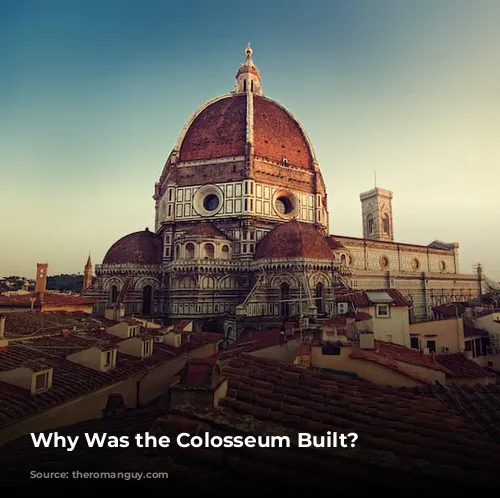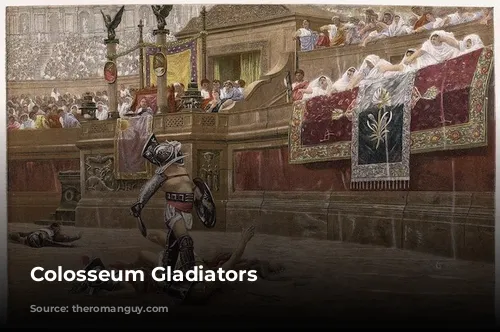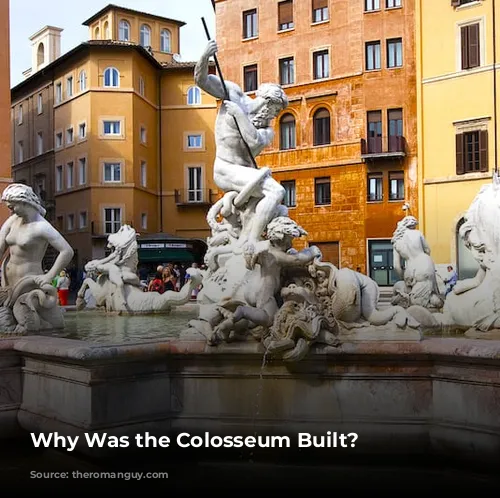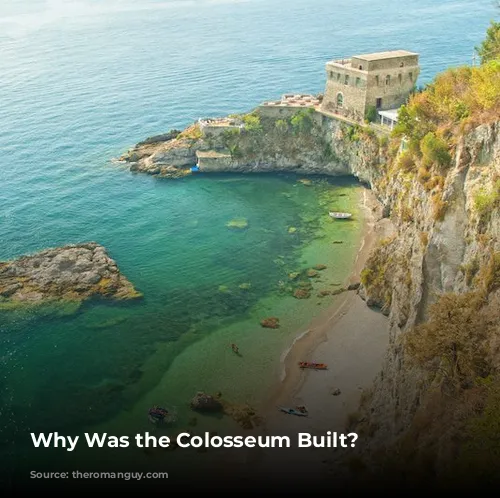Imagine a scene: the sun has just risen, and tens of thousands of people are packed into a massive arena. The air is thick with anticipation – you can practically feel the electricity. Then, the crowd erupts in a thunderous roar as gladiators enter the arena, ready for a spectacle unlike any other. This is the Colosseum, a monument to the power and grandeur of ancient Rome.
But why was this incredible structure built? The answer lies in the complex needs of Roman society.
Controlling the Crowds
The Colosseum served a practical purpose: to control the vast and often volatile crowds of Rome. In the days before the Colosseum, large events were held in wooden structures that were prone to fires and accidents. The Colosseum, built from sturdy stone, provided a safer and more controlled environment for these gatherings.
A Political Tool
The Colosseum was also a powerful political tool for Roman senators. By sponsoring events and games, senators could gain favor with the people and increase their chances of winning elections. The Colosseum was a stage where political ambitions were played out for all to see.
Maintaining Peace
However, the true reason for the Colosseum’s existence was much more profound. The Roman emperors understood that the common people faced a difficult life, working long hours and facing constant hardship. To keep the peace, they provided “bread and circuses”: a safety net for the poor and thrilling entertainment to keep them distracted from their daily struggles.
When Was the Colosseum Built?
The Colosseum’s construction began in 72 AD, a time of great upheaval and unrest in Rome. After the assassination of Emperor Nero, Vespasian Flavian, a shrewd and ambitious general, ascended to the throne. He recognized that stability was paramount and sought to solidify his rule.
Vespasian, having recently triumphed over a revolt in Jerusalem, was flush with riches and enslaved labor. He decided to build the most magnificent amphitheater the world had ever seen, not just as a testament to his power but also as a way to win over his subjects. He understood that a happy populace was a less rebellious populace.
Building a Monument
The Colosseum was built by tens of thousands of slaves, who worked tirelessly for eight years to complete this massive structure. The Colosseum stands as a testament to the ambition and engineering prowess of the ancient Romans.
The amphitheater was constructed using travertine, tufa, brick, and wood. It has stood for nearly 2,000 years, but its grandeur has been diminished by centuries of plundering for building materials.
What Was the Colosseum Used For?
The Colosseum was the stage for the most spectacular and brutal entertainment of the Roman world. Gladiatorial combat, the most popular form of entertainment, took many forms: from thrilling one-on-one battles to massive group fights featuring dozens of gladiators.
More Than Just Gladiators
The Colosseum was also a venue for animal hunts, where exotic beasts were pitted against each other or against gladiators. Sadly, public executions were also carried out within its walls.
Gladiator Culture
Despite the violence, gladiators were revered by the Roman populace. They were trained in rigorous schools called Ludus, and their skills were honed through years of practice. The Romans idolized them, and their popularity fueled the Colosseum’s popularity for over 300 years.
Experience the Colosseum Today
Today, the Colosseum stands as a reminder of the power and splendor of ancient Rome. It is a must-see for any visitor to the Eternal City. But don’t just wander around aimlessly!
Choose a tour: there are many excellent guided tours that will bring the Colosseum’s history to life with fascinating stories and insights.
Find the perfect spot to dine: There are many delicious restaurants near the Colosseum, so you can enjoy a tasty meal before or after your tour.




